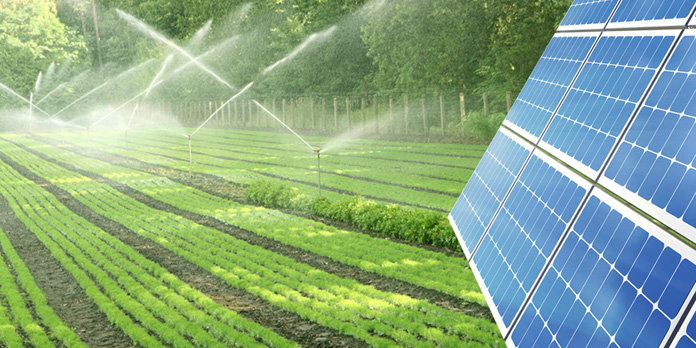A solar water pump system is designed to utilize solar energy to pump water from a source (like a well, borehole, or reservoir) to a desired location for various purposes such as irrigation, livestock watering, and domestic use. The components of a basic solar water pump system typically include:
- Solar Panels: These are photovoltaic panels that convert sunlight into electrical energy. The number and capacity of panels depend on the pump’s power requirements and the amount of sunlight available in the location.
- Solar Charge Controller: A charge controller regulates the amount of electricity flowing from the solar panels to the pump system’s battery. It prevents overcharging and damage to the batteries.
- Batteries: Solar water pump systems often include batteries to store excess energy generated by the solar panels during sunny periods. These batteries provide power for the pump during cloudy days or at night when the sun isn’t shining.
- DC Water Pump: Direct Current (DC) water pumps are used in solar water pump systems. These pumps are designed to operate directly from the DC output of the solar panels or the batteries. The pump’s capacity and flow rate depend on the specific application requirements.
- Water Intake and Filter: This component collects water from the source (well, borehole, etc.) and filters out debris before sending it to the pump. A strainer or filter prevents damage to the pump caused by large particles.
- Water Delivery System: Pipes, hoses, and connectors are used to transport water from the pump to the desired location. The size and design of the delivery system depend on the distance the water needs to travel and the required flow rate.
- Pressure Tank or Storage Tank: A pressure tank can be used to store water and maintain a steady water supply even when the pump is not actively running. It helps regulate water pressure and reduces the number of pump starts.
- Controllers and Sensors: Some advanced systems include controllers and sensors to monitor and optimize the pump’s performance. These can include features like variable speed control, water level sensors, and remote monitoring capabilities.
- Mounting Structure: Solar panels need to be mounted securely and at an appropriate angle to maximize sunlight exposure. Mounting structures can be ground-mounted or roof-mounted, depending on the available space.
- Wiring and Connectors: Proper wiring and connectors are essential for connecting the various components of the system. High-quality, weather-resistant wiring ensures efficient energy transfer and system longevity.
- Safety Measures: Safety components like circuit breakers and surge protectors should be included to protect the system from power surges and overloads.
It’s important to note that the specific components and their configurations can vary based on factors like the water requirements, the location’s solar radiation, and the local climate. Proper design and sizing of each component are crucial for the efficient and reliable operation of a solar water pump system.


